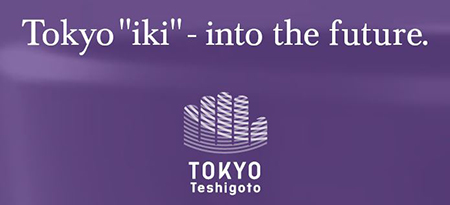Tokyo TeueBrush
(Handmade Brushes)

- To create that touch, manual works were necessary.
- Brushes were introduced from the West along with modernization, and those developed into the wide product lines including Western cloth brush, shoe brush, body brush and others. Even today when most of them are manufactured by machines, Tokyo TeueBurashi (handmade brushes) adopts only manual methods. Animal hair of horses,pigs and others, and plant fibers are used for bristles. The manufacturing process starts from selecting only good hair. The next process of bristle implant is where the craftsmen’s skills at mostly required. The quality of hair varies according to body, rump, and tail, and a craftsman usesthem according to their flexibility and springiness. The next process of manual implant makes a complete difference from machine-made products: acraftsman checks the entire balance of bristles, and picks an appropriate volume of hair with the hand touch to implant them as bristles. The hole density is determined after prototype making is implemented several times. Horsehair cloth brushes can retain the sheen of delicate clothes, such as cashmere and Kimono, giving no damage. The brushescoming into contact with the skinusually usegoat-hair,and can give a special touch, asifembraced by the soft bristle. With the ambition to produce appropriate brushes for varying needs, craftsmen are studying in pursuit of ideal bristles day after day.
| Main Areas of Manufacture | Taito Ward, Sumida Ward, Arakawa Ward |
|---|---|
| Designation/ Certification Date | January 25th, 2002 (Tokyo Certification) |
| Traditionally Used Raw Materials | Bristles: Karukaya, Palm, Cedar, Tampico, fern, horse hair, pig hair, goat hair. Base wood: Katsura, Magnolia, Cherry, Japanese Beech, Bamboo. |
Traditional Technologies and Techniques
- Processing of base wood:
The base wood is cut and planed down. - Marking:
A template is placed over the wooden base of the brush and the bristle insertion positions are marked out using ink. - Creation of bristle holes:
Bristle holes are made at the points marked in ink on the base wood. - Bristle cutting:
The bristles are cut to a specific length. - Bristle mixing:
Bristles are mixed by hand so that the (soft) tips and (hard) roots are aligned identically. - Sorting by hand:
Short bristles, bristles with irregular shapes and other problematic strands are removed. - Bristle insertion:
Predetermined clump quantities of bristles are picked out precisely and folded in two, and a metal wire is passed through and drawn along the center of the wood to pull the bristles firmly down into the bristle holes. - Cover attachment:
A thin, wooden cover piece is attached to hide the metal wires and make the product easier to use. - Base wood finishing:
① The size of the main body and attached cover are made uniform and the physical feel of the product when held is improved.
② Grooves are added to the side portions to make the product easier to hold. - Bristle trimming:
The bristle tips are trimmed to achieve a uniform, predetermined bristle length throughout. - Finishing:
The product's surfaces are painted uniformly.
History and Characteristics
Brush production (of so-called "western brushes") commenced in Japan around the 7th year of the Meiji Era (1874). At the time, brushes made in France were used as product examples. In the 10th year of the Meiji Era (1877), the First National Industrial Exhibition was held at Ueno Park, with a display of western-style brushes being very well-received. Following on, craftsmen who had traditionally made Japanese brushes began to get involved in the manufacture of western brushes. Production started off with horse hair being used for bristles, oak being used for timber, and bristle holes being made using hand gimlets.
In Meiji 21 (1888), Japan's first brush manufacturing company was established by Matsumoto Jutaro (1844-1914), who was at the time a director of the Dai Hyakusanju Bank (the National 130th Bank). Due to numerous improvements, what resulted was a penetration of brushes into society in much the same way as can be witnessed today. The brush manufacturing industry developed focusing on Tokyo and Osaka. As new machinery was introduced to industries, it came to pass that there were a great variety of brushes used for industrial purposes in workplaces. Moreover, as Japanese home life became increasingly westernized, demand for household brushes increased. Accordingly, in locations such as Wakayama Prefecture, brush manufacturing companies introduced large-capacity machinery and mass production commenced. Later on, in factories in Osaka and Wakayama, even greater industrialization steps were taken. In Tokyo by contrast, a city that had started out with many businesses engaged in producing industrial-purpose brushes, highly-durable brushes whose bristles were hand-inserted were developed.
Because hand-inserted bristles in such brushes run together in that they are all pulled down by an internal metal wire called a "pulling string," they are more robust than bristles in machine-made brushes because with machine-made brushes bristles are directly inserted into each individual hole (and they are not secured by a "pulling string"). It is for this reason that Tokyo's brush manufacturers continue the traditional practice of inserting brush bristles by hand.
Contact Details
| Manufacturing Area Cooperative Name | Tokyo Brush Association |
|---|---|
| Address | 2-16 Nihonbashi Odenmacho, Chuo-ku, Tokyo 103-0011 |
| TEL | 03-3664-5671 |






